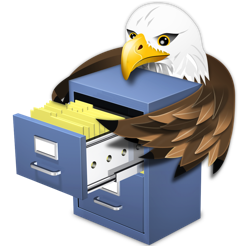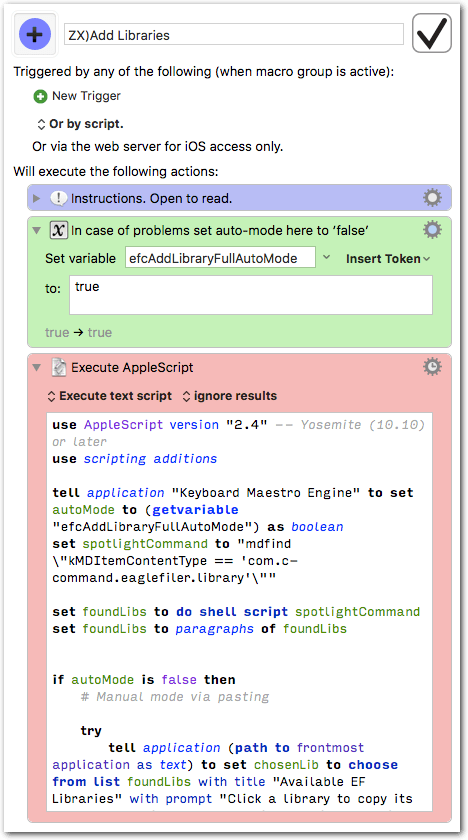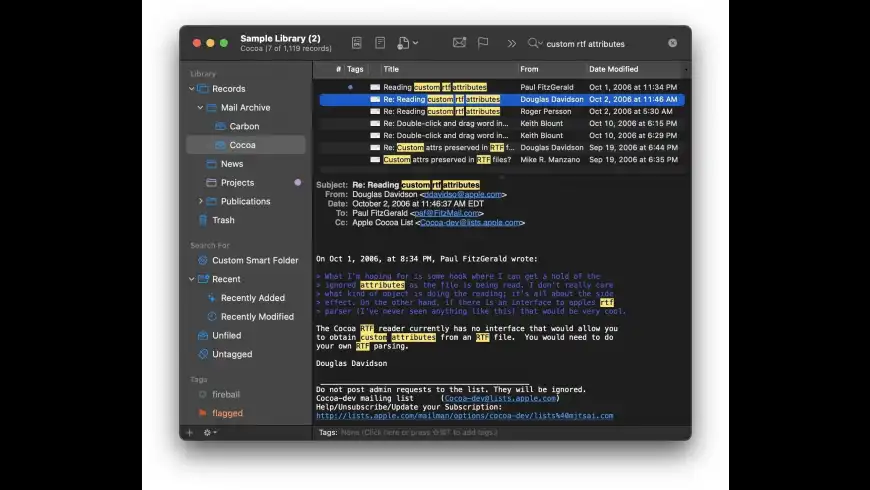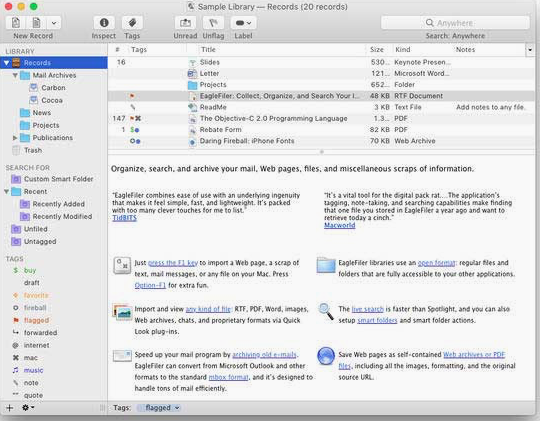EagleFiler is a digital filing cabinet for your data. It includes a finder style layout that allows for a variety of ways to import and organize your information, add metadata, and quick and easy search methods for finding your information. EagleFiler for Mac is a digital filing cabinet, a research assistant, and a snippet collector. You can use it to write a journal, track all the files for a project or job, save your favorite Web articles, store financial statements. Michael Tsai of C-Command Software has issued EagleFiler 1.9.1, a maintenance release that follows the recent update focused on macOS 11 Big Sur improvements (see “EagleFiler 1.9,” 26 October 2020). Jul 08, 2014 Given all that, EagleFiler allows you to add tags to your files and has a great search ability, much like Evernote. Getting Information Into EagleFiler. If you have existing files outside of EagleFiler, you can drag folders and files in and it will create your folder structure from them. EagleFiler also has a great clipper function. EagleFiler is a program that makes managing all the information you receive easy. EagleFiler lets you archive and search mail, Web pages, PDF files, word processing documents, images, and more. Use it to collect information from a variety of sources. Browse different types of files using a standard three-pane interface.

Wars are not over in Information Managers land: Michael Tsai has released EagleFiler (via John Gruber) which, at first glance, looks really really REALLY similar to Yojimbo or SOHO Notes or what-have-you.
Eaglefiler Support


Since that, contrary to what I said earlier, I’m not completeley sold on SOHO Notes yet (I just realized there are NO SMART FOLDERS, which are very useful in organizing automatically your stuff), I’m going to try and use this one for a while.
First impression is not so good: the app opens a rather useless “Drop Box” window (when dropping on the app window itself is just as convenient), dropping a folder full of PDFs on EagleFiler just confused it on the first try – on the second it was fine (?)… And watching PDFs directly in the app will involve a lot of zooming in, as by default all the page is displayed, which is not so convenient for some uses (see the screenshot).

Note there’s no controls for the PDF view! You can go through pages with keyboard shortcuts, but still surprising. The app also does not open the last opened library on startup (you have to hunt for it in File/Opened recent)… None of this is configurable, AFAICT. Minor gripes: the app is very slow to start up and not very fast after. Closing the window closes the database (which is understandable since the app is document-based, Mori does the same thing. But still). The error window is too obstrusive for my tastes. It won’t let me (and you) import unusual file formats. You can insert RTF notes in the database, but not edit them right in EagleFiler – double-cliking opens them in TextEdit.

Eaglefiler Mac Download
On the bright side, the tags management is interesting – tags are not free-form, like in del.icio.us or journler, but you have to select them from a user-modifiable list. When you enter a new tag, a smart folder containing all the posts thusly tagged is automatically created. You get hierarchical folders AND smart folders, and if you select many their combined content is displayed. There’s also the fact that the document Library is actually browsable in the Finder – you can move around PDFs or notes and EagleFinder will reflect it in its interface. Unsure if that’s useful in real life, but comforting. EagleFiler can also import from Mail on a mailbox basis, retaining attachments, reply/forward status (nice!) and tags created with MailTags! Only relevant to a few people, but it will make them very, very happy. Labels are synchronized with the Finder’s.
Eaglefiler Esoteric
Some of these little touches are nice (mail importing is especially polished and great for archiving), but all in all I’m not sure what EagleFiler brings to the already full landscape of information managers on mac. If I had to say one thing, the library management seems very robust and reliable, so folks concerned about the integrity of their data could like it. On the other hand, I had a crash in the first 10 minutes of use.
